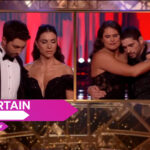The glow of neon lights, the thump of synth bass, and the uninhibited joy of movement – the 1980s pulsed with a unique energy, and nowhere was this more evident than in its dance music. If you find yourself tapping your foot to a catchy beat and suddenly craving leg warmers, you might be experiencing the undeniable pull of 80s dance music nostalgia. It’s a feeling that goes beyond just liking the songs; it’s a visceral connection to a time of bold self-expression and groundbreaking sonic innovation.
What exactly is it about 1980s Dance Music that continues to captivate generations? It’s a potent cocktail of factors, starting with the music itself. Emerging from the tail end of the disco era and fueled by technological advancements in synthesizers and drum machines, 80s dance music exploded into a kaleidoscope of genres. Synth-pop, with its catchy melodies and futuristic sounds, dominated airwaves thanks to pioneers like Depeche Mode, New Order, and Eurythmics. New Wave brought a raw, energetic edge to the dance floor, think Blondie and The B-52’s. And the evolution of funk and soul birthed iconic artists like Prince and Michael Jackson, who redefined pop and dance music with their electrifying performances and groundbreaking albums.
The decade wasn’t just about the sound; it was a cultural phenomenon. MTV arrived on the scene, visually amplifying the impact of dance music and turning artists into global icons. Music videos became miniature cinematic experiences, showcasing not only the music but also the fashion and attitude of the era. Dance clubs became vibrant hubs of social life, each city boasting its own unique scene and sound. From the underground clubs of New York City to the burgeoning scenes in London and beyond, 80s dance music provided the soundtrack to a generation finding its voice and expressing itself on the dance floor.
Think about the anthems that defined the decade. Madonna’s “Like a Prayer” blended pop, dance, and even gospel influences into a revolutionary sound. Whitney Houston’s soaring vocals in “I Wanna Dance with Somebody (Who Loves Me)” became synonymous with pure joy and celebration. Prince’s “1999” was a party-starting call to arms, urging everyone to dance their way into the future. These weren’t just songs; they were cultural touchstones, played at school dances, on mixtapes, and blasted from car radios, creating a shared experience for millions.
This shared experience is key to understanding the enduring nostalgia for 1980s dance music. Just like the author of the original article felt a pang of nostalgia for 80s “chill” music heard passively on the radio, 80s dance music evokes powerful memories. For many, it’s the soundtrack to their youth, to first loves, friendships, and formative experiences. Even if you weren’t consciously choosing to listen to these tracks, they permeated the cultural landscape, becoming inextricably linked to memories of that time. Hearing a classic 80s dance track today isn’t just about enjoying the music; it’s about reconnecting with a past self, a past era, and a feeling of youthful exuberance.
Perhaps that’s the magic of 80s dance music. It’s not just about the individual songs, however iconic they are. It’s about the memories and feelings they trigger, transporting us back to a time of vibrant energy, bold fashion, and a sense of endless possibility on the dance floor.
So, whether you were there to experience it firsthand or are discovering it now, the allure of 1980s dance music remains potent. It’s a testament to the power of music to define a generation and to the enduring human need to move, connect, and lose ourselves in the rhythm. Put on your favorite 80s dance track, turn up the volume, and let the nostalgia wash over you. You might be surprised at just how good it feels to relive the beat.

